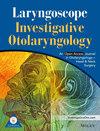Endoscopic Vascular Grading Directs Stepwise Therapy in Hereditary Hemorrhagic Telangiectasia
Abstract
Objective
To establish a nasal endoscopic vascular grading system for predicting epistaxis severity and guiding stepwise therapy in hereditary hemorrhagic telangiectasia (HHT).
Methods
A retrospective cohort of 32 HHT patients from 22 families was classified via 1080p endoscopy into three grades: Grade I: Sparse punctate telangiectases; Grade II: Dense confluent vessels; Grade III: Protruding hemangiomas. Demographics, Epistaxis Severity Score (ESS), hemoglobin levels (Hb), systemic vascular lesions, and ENG/ACVRL1 mutations were analyzed. Treatment outcomes were compared across grades.
Results
Grade I accounted for 18.8%, Grade II for 34.4%, and Grade III for 46.9%. Grade III patients showed the highest ESS (6.31 ± 2.13 vs. 1.21 ± 0.92 for Grade I, p < 0.01) and the lowest Hb (97.2 ± 22.4 vs. 129.5 ± 4.9 g/L for Grade I, p < 0.05), and had more systemic lesions (80.0% of Grade III patients had hand/oral/visceral hemangiomas vs. 16.7% in Grade I, p < 0.01). Local therapies or tranexamic acid treatment sufficed for Grade I/II patients, who maintained stable ESS. Among Grade III patients who showed no improvement after treatment with tranexamic acid, bevacizumab (administered at a dose of 5 mg/kg every 3–6 months) improved the ESS and increased the Hb in 62.5% of the patients (5 out of 8), and no severe adverse events occurred.
Conclusion
This study preliminarily confirms a significant correlation between nasal endoscopic vascular morphology and HHT epistaxis severity, guiding disease assessment and treatment planning.
Level of Evidence
3.


 求助内容:
求助内容: 应助结果提醒方式:
应助结果提醒方式:


